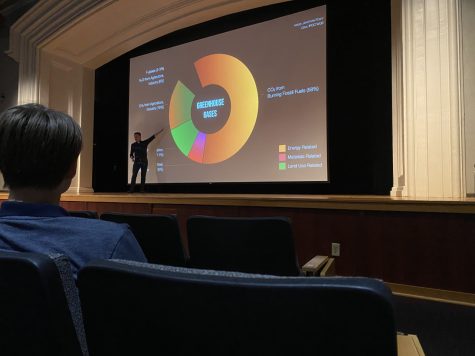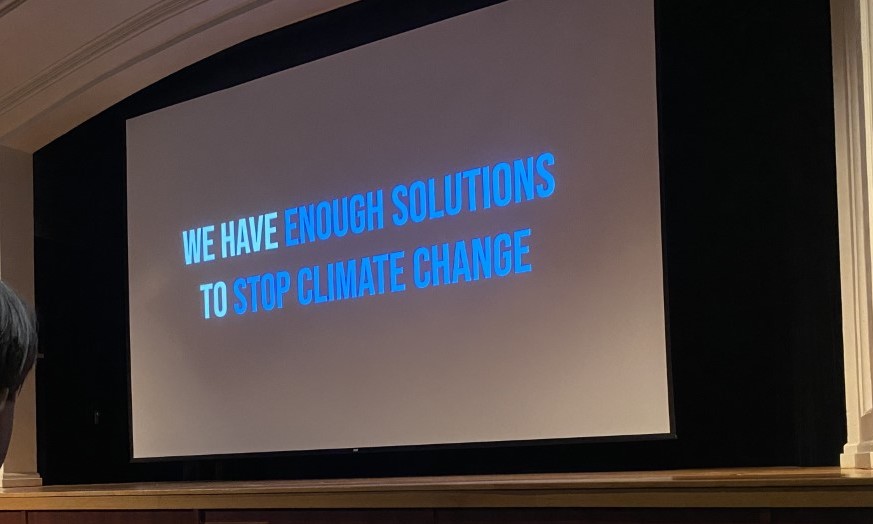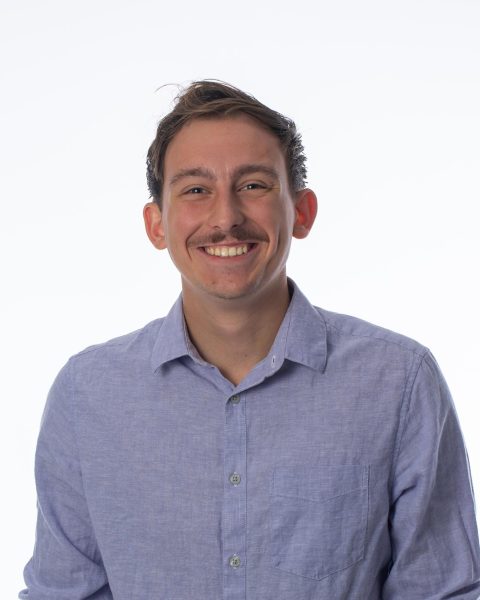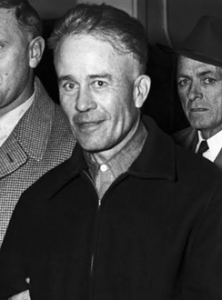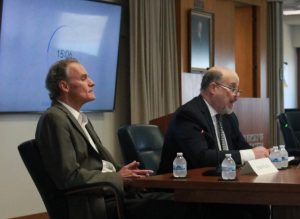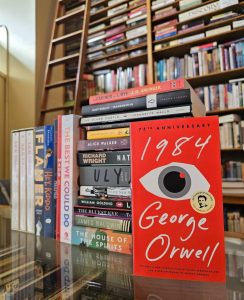“We can still build a better future”: Climate Expert Jonathan Foley presents at UWL
April 17, 2023
On Tuesday, April 11, Dr. Jonathan Foley visited the University of Wisconsin-La Crosse to present his lecture titled “Achieving Drawdown – A Hopeful, Science-based Plan to Address Climate Change.” Foley is the Executive Director of Project Drawdown.
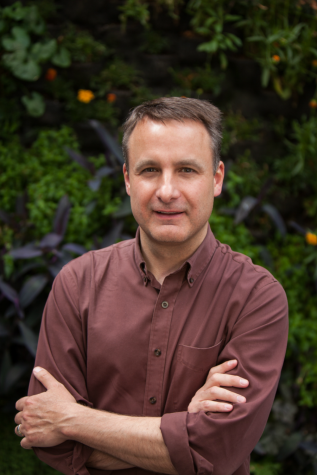
According to the Project Drawdown website, Foley is a world-renowned environmental scientist, sustainability expert, author, and public speaker.
He began his lecture by discussing the history of human evolution and how we got to where we are today in relation to climate change. One of the largest changes in our world is land use. Foley said, “One of the most obvious of this [change in land use] is the clearing of the tropical forests.”
To show the change in how the land is used, Foley presented a map of the Amazon Rainforest landscape in the 1970s compared to the 2000s. Now millions of acres are being used to farm soybeans.
Foley explained the importance of greenhouse gases and their warming effect on the environment. Foley said that greenhouse gases are inherently invisible and that “they trap infrared radiation and warm the planet and that is exactly what has been happening.”
He said that our changing climate was subtle at first but now “carbon dioxide levels are now 50% higher than they should be for this time in earth’s history.” Foley said that all of these things combined are warming the earth and that this theme was predicted years prior. He stated the earth has warmed about 1.1 degrees Celsius or roughly 33.9 degrees Fahrenheit.
The basic idea of greenhouse warming was discovered in 1856 by a woman named Eunice Foot but her discovery was ignored for over 160 years. Foley said that because of the science behind the greenhouse gas effect, “this is not something that we should still be debating in the 21st century.”
“The impacts of that warming are starting to grow around us, and we are starting to see serious problems in our weather patterns, in our water, our agriculture, our ecosystems, and so on, and those are only just beginning,” said Foley.
Foley told those who attended the lecture that they may feel hopeless about how they can mitigate the effects of climate change. He said, “It feels so hopeless because you’re being told that it is.” He continued, “It is not hopeless.” A lot of reasons why students tell Foley they feel hopeless, he said, have to do with media bias.
“It turns out that 99% of American media coverage about climate change right now is telling you a story of doomsday.” Foley stated, “Less than 1% of media coverage talks about the amazing people, like people here in La Crosse, who are trying to stop [climate change] and are building tools, approaches, and technologies every day and they’re having amazing successes.”
“We can still build a better future and a future we want if we really double down, get to work, and focus on the right things,” said Foley.
He then listed the three most important gases polluting the atmosphere, carbon dioxide, methane, and nitrous oxide. 58% of the pollution emitted into the atmosphere comes from carbon dioxide by burning fossil fuels.
Foley said that carbon dioxide is also emitted from industrial processes, like making cement or steel. Industrial processes account for 6% of carbon dioxide emissions.
The process of deforestation also emits carbon dioxide. “When you burn down trees, you are also burning carbon that is released into the atmosphere,” Foley explained.
As previously mentioned, other gases that pollute the atmosphere are methane and nitrous oxide. Foley explained that the majority of methane and nitrous oxide comes from agriculture and the overuse of fertilizers, but also from other energy sources.
Foley went on to discuss how climate change ultimately happens. He said that humans emit greenhouse gases and pollute the atmosphere which then builds up and cause the warming of the earth. A diagram was presented to the audience to visualize the process.
Foley explained there are things in nature called carbon sinks that remove some of these greenhouse gases, specifically carbon dioxide. He said that trees and land absorb carbon dioxide whereas oceans dissolve carbon dioxide.
He stated that the carbon sinks absorb 40% of the carbon dioxide in the atmosphere. That still leaves 60% of the pollution in the atmosphere which Foley said contributes to biochange. “Without [nature’s carbon sinks] this number would be a lot worse,” said Foley.
After presenting this information, Foley asked the audience a rhetorical question, “How do you reduce or stop the sources to come down to net zero?” According to the United Nations, net-zero means, “cutting greenhouse gas emissions to as close to zero as possible, with any remaining emissions re-absorbed from the atmosphere, by oceans and forests for instance.”
Foley’s answer was to keep the natural carbon sinks intact and potentially create human sinks by planting more trees. Additionally, Foley said that we need to analyze climate solutions and determine which will work. That is what Project Drawdown does.
In terms of electricity, Foley explained the importance of being more efficient and using less energy. When addressing agriculture and our food industry, Foley said reducing food waste is one of the top five ways to reduce pollution and mitigate climate change. Foley said by doing these small actions we “can protect ecosystems from being cleared and we can grow crops on the mainland more sustainably.”
“We do not need to believe this doomsday scenario that it’s impossible for us to stop [climate change],” said Foley. “The tools we have can create jobs, they reduce other types of pollution that harm human health, they can improve equity and justice, they can improve society making us healthier, better off, more secure and overall just improve well-being.”
In order to pull off the mitigation to climate change, Foley said, “We need to cut emissions and cut them fast.” He continued, “And that is very possible, but it’s going to be hard.” Foley explained that the work we do today would cut carbon emissions in the future by over 900 billion tons.
“In a few years, when we start making a lot more progress in climate change, I think the world is gonna look around and go, ‘What the hell took us so long? This is awesome. Look at the world we’re building. Why didn’t we do this earlier?’”
